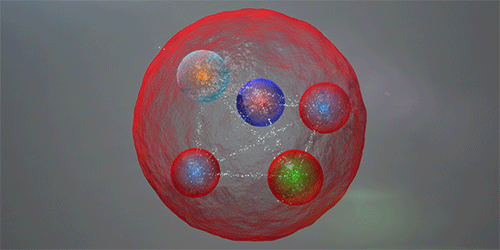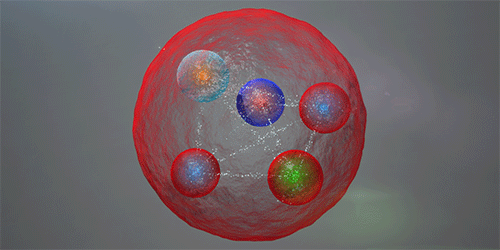Pentaquark Discovery Confirmed
Pentaquarks are here to stay. Two new studies from the LHCb collaboration at CERN’s Large Hadron Collider quash any remaining doubts about the discovery of the exotic five-quark particles that was announced last year (see 12 August 2015 Viewpoint). One study demonstrates that the evidence for pentaquarks in the discovery data is model independent. Another reports evidence for exotic hadronic particles—whose properties are consistent with those of the previously observed pentaquarks—in a new particle-decay channel.
Quarks normally aggregate in groups of twos and threes. But in the past two years the LHCb collaboration has confirmed the existence of exotic four-quark and five-quark particles that had long been predicted by theorists. In the pentaquark case, in 2015 the team analyzed data from the decay of the particle, which consists of three quarks, into three quark-containing particles: a , a proton, and a charged kaon. They found that sometimes, when decays, it turns into an intermediate state comprising a five-quark particle and a kaon. But despite having a whopping statistical significance of , the result relied on model assumptions about the nature of other intermediate states containing a kaon and a proton.
In one of the new studies, the researchers redid the analysis, eliminating these assumptions, and showed with a significance of over that pentaquarks are indeed necessary to explain the data. In the other study, the team sifted through data from another decay channel of , in which the particle decays into , a proton, and a charged pion. They demonstrated that the data are consistent with the theoretical prediction for decays involving the same type of pentaquarks as those previously detected.
This research is published in Physical Review Letters.
–Ana Lopes
Ana Lopes is a Senior Editor of Physics.





